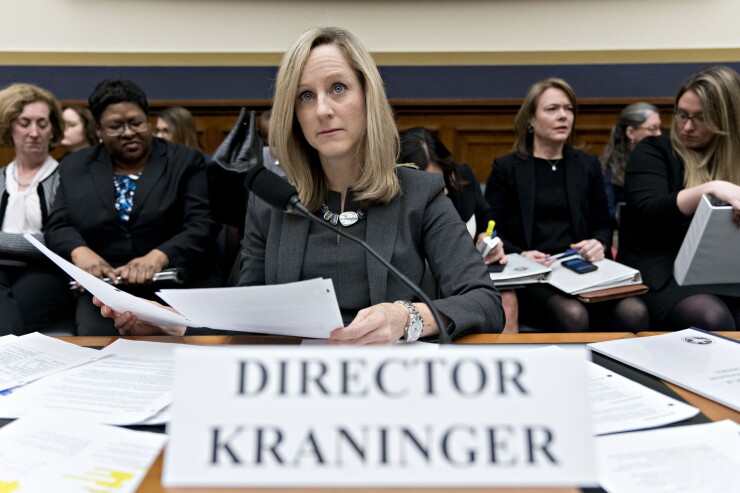The Consumer Financial Protection Bureau confirmed that loans backed by Fannie Mae and Freddie Mac will remain exempt from the agency's Qualified Mortgage standard until the bureau finishes rewriting the QM rule.
The bureau's decision announced Tuesday is intended to provide breathing room for the mortgage market that had feared a quick end for the exemption before the CFPB makes key changes sought by the industry to the underwriting rule.
For the past seven years, loans approved by the government-sponsored enterprises' underwriting engines have been considered ultrasafe qualified mortgages that automatically meet the bureau’s ability-to-repay underwriting requirements. QM loans give lenders a safe harbor from legal liability.
The temporary exemption granted in the 2014 rule allows loans backed by the GSEs to avoid a maximum 43% debt-to-income ratio but still be considered QM. The exemption, known as the GSE "patch," was originally set to expire Jan. 1, 2021.

The CFPB previously extended the patch’s deadline to April 1 of next year as it simultaneously announced plans to overhaul the definition of QM.
But the result of Tuesday's announcement effectively means the patch could remain indefinitely or at least until the agency's completed QM revamp is in effect.
“We knew when the bureau first issued the QM rule that the patch was set to expire in 2021, and recognizing that ... we issued a general QM proposal just a few months ago,” CFPB Director Kathy Kraninger said Tuesday at a virtual convention of the Mortgage Bankers Association. “It was the result of many years of conversation as well as our assessment of that prior rule that led us to the changes we proposed.”
The CFPB’s QM
Kraninger said the change would ensure that more borrowers "on the edge" would still be able to get a home loan.
“We believe a pricing threshold is a more holistic measure of an individual’s ability to repay than DTI alone,” Kraninger said Tuesday. “We also knew that the 43% DTI, if put in place and strictly followed, ... would really preclude access to credit and really reduce [for] many people, particularly those on the edge, that opportunity for homeownership.”
The QM definition would still require lenders to consider a borrower’s income or assets, debt obligations and DTI ratio or residual income when making a loan. Lenders would still have to verify the borrower’s current income or assets and debt obligations.





